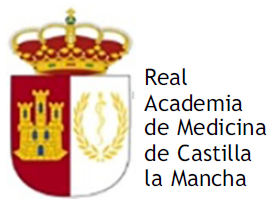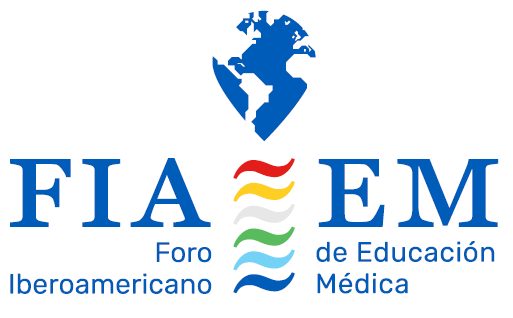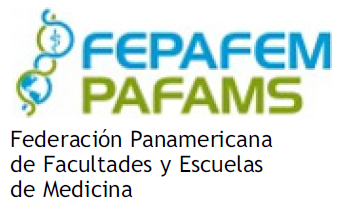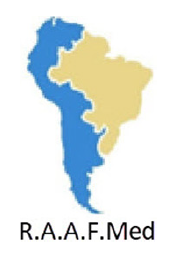Scientific societies at the undergraduate level contribute to the research training of students. Therefore, the aim of the study is to perform a scientometric analysis of the scientific production of the 27 Scientific Societies of Medical Students (SOCEM) between 2011 and 2020.
MethodsA scientometric study of documents in journals indexed in Scopus was performed. A search strategy was developed to identify the scientific production of all SOCEMs with institutional affiliation identifier (AF-ID) in Scopus. Data were extracted using a formula developed with the AF-IDs of each SOCEM and exported to the SciVal tool for analysis.
ResultsUrrunaga-Pastor was the author with SOCEM affiliation with the highest number of citations: 92. Four of the five authors of the articles with SOCEM affiliation with the highest number of citations were from the San Fernando Scientific Society (SCSF). The journal with the highest number of papers with SOCEM affiliation was Revista Peruana de Medicina Experimental y Salud Pública. Most of the papers were published in third quartile journals. SCSF was the SOCEM with the highest number of papers: 45, while the Scientific Society of Medical Students of the Universidad de San Martin de Porres (SOCIEM-USMP) had the highest number of citations per paper: 3.9.
ConclusionThe number of documents with SOCEM affiliation has been increasing, however, the distribution over the quartiles of the journals has not changed. It’s necessary for public and private institutions to make joint efforts to establish connections to have a greater impact on publications with SOCEM affiliation.
Las sociedades científicas de pregrado contribuyen a la formación investigadora de los estudiantes. Por ello, el objetivo del estudio es realizar un análisis cienciométrico de la producción científica de las 27 Sociedades Científicas de Estudiantes de Medicina (SOCEM) entre 2011 y 2020.
MétodosSe realizó un estudio cienciométrico de documentos en revistas indexadas en Scopus. Se desarrolló una estrategia de búsqueda para identificar la producción científica de todas las SOCEM con identificador de afiliación institucional (AF-ID) en Scopus. Los datos se extrajeron mediante una fórmula desarrollada con los AF-ID de cada SOCEM y se exportaron a la herramienta SciVal para su análisis.
ResultadosUrrunaga-Pastor fue el autor con afiliación SOCEM con mayor número de citas: 92. Cuatro de los cinco autores de los artículos con afiliación SOCEM con mayor número de citas eran de la Sociedad Científica de San Fernando (SCSF). La revista con mayor número de artículos con afiliación a la SOCEM fue la Revista Peruana de Medicina Experimental y Salud Pública. La mayoría de los trabajos se publicaron en revistas del tercer cuartil. La SCSF fue la SOCEM con el mayor número de trabajos: 45, mientras que la Sociedad Científica de Estudiantes de Medicina de la Universidad de San Martín de Porres (SOCIEM-USMP) tuvo el mayor número de citas por trabajo: 3.9.
ConclusiónEl número de documentos con afiliación a la SOCEM ha ido aumentando, sin embargo, la distribución en los cuartiles de las revistas no ha cambiado. Es necesario que las instituciones públicas y privadas realicen esfuerzos conjuntos para establecer conexiones para tener un mayor impacto en las publicaciones con afiliación SOCEM.
The Scientific Societies of Medical Students (SOCEM) are institutions formed by undergraduate university students in the career of human medicine organized with the following purpose: "to promote collaboration between students of human medicine through the development of scientific-academic activities, promoting an atmosphere of cordiality and solidarity among its members".1 Currently, there are 42 SOCEMs affiliated with the Peruvian Medical-Student Scientific Society (SOCIMEP).1
Among the fundamental objectives of the SOCEMs are the scientific-academic training of medical students, members of the SOCEM, in the field of research through the organization of scientific events, encouraging them to participate in research projects and increasing the publication of scientific articles.1,2 In this regard, it can be mentioned that, indeed, there is an association between belonging to a SOCEM and/or taking extracurricular research courses with a greater commitment and initiative on the promotion of medical education3 and a greater scientific production by undergraduate students.4,5 Other factors associated with the scientific-academic production of undergraduate students in Health Sciences are experience (belonging to the fifth or sixth year of the course), being part of a study group, student interest in the research topic, willingness of teachers or advisors, among others.5,6
To evaluate the scientific output of a research-focused institution, bibliometric indicators can be analyzed: impact factor, immediacy index, total citations per year, and citation half-life.7 In addition, the evaluation of collaborative networks can also be used to determine the production capacity of an author or an institution.8 All these indicators can be used to evaluate scientific production, in accordance with the objectives of SOCEMs, by means of a bibliometric analysis.
Therefore, the aim of the present research was to describe, by means of a scientometric analysis, the scientific publications of the 27 scientific societies of medicine in Peru in the period 2011-2020.
Materials and methodsA bibliometric evaluation study of the scientific production of the Peruvian SOCEMs during the period 2011-2020 was carried out. We included the societies affiliated to SOCIMEP in Scopus. We excluded those scientific societies without an institutional affiliation identifier (AF-ID) in Scopus.
DatabaseThe bibliographic database Scopus was used to obtain the documents. Scopus is an international multidisciplinary database, which includes all the references belonging to Medline, in addition to having a greater number of journals and articles compared to PubMed, Web of Science or Google Scholar.9
Search strategyA search was performed for the 42 SOCEM affiliated to SOCIMEP, of which 27 had an institutional affiliation identifier (AF-ID) in Scopus. The 27 SOCEMs analyzed are listed in Supplementary Table 1. From this, a strategy combining all the AF-IDs with the Boolean term "OR" was performed, as in the following example: AF-ID (60122484) OR AF-ID (60122511) (Supplementary Table 2). The scientific production of each of the SOCEMs was limited to the area of medicine and each SOCEM evaluated was used.
Data analysisThe collected data were downloaded as a .csv file and exported to SciVal to perform the scientometric analysis. The date of data retrieval and analysis was December 30, 2021. This software allowed to analyze the last ten years (2011 to 2020) of scientific production.
Scientometric indicatorsIn the present study, the following were considered: the number of documents that each SOCEM indexed in Scopus, the number of citations that each SOCEM received, Scimago Journal Rank and the CiteScore.10 Regarding the top authors with SOCEM affiliation, a manual search was performed based on the SciVal analysis. Only those documents in which the authors had affiliation with their respective SOCEM were included in the document count. On the other hand, for the top of the most productive SOCEMs, a manual search was performed during the study period (2011-2020) since SciVal did not provide this information.
ResultsA total of 239 documents were retrieved from the Medicine Category. With 781 citations and, in addition, an average of 3.3 citations per document. Most of the retrieved documents were published in the following subcategories: Public, Environmental and Occupational Health (n = 34.3%), General Medicine (n = 48; 20.1%), Infectious Diseases (n = 13; 5.4%), Health Policy (n = 11; 4.6%) and Ophthalmology (n = 10; 4.2%).
Top-5 most productive authorsTable 1 shows the authors with the highest production in intestinal microbiota and Parkinson's disease. Aquino-Canchari C.R. with affiliation of the Sociedad Científica de Estudiantes de Medicina Los Andes leads the list with the highest number of papers: 18. Urrunaga-Pastor, Diego is the author with the highest number of citations: 92, followed in citations by Tellez, W. A. with 36 citations.
Top five most cited authors with SOCEM affiliation (2011–2020)*.
| Rank | Author | Citation per document | Total citations | Documents | Q1 n(%) | Q2n(%) | Q3n(%) | Q4 n(%) | SOCEM |
|---|---|---|---|---|---|---|---|---|---|
| 1 | Urrunaga-Pastor, Diego | 7.6 | 92 | 12 | 3 (25.0) | 5 (41.7) | 3 (25.0) | 1 (8.3) | SOCIEM-USMPa |
| 2 | Tellez, W.A. | 3.0 | 36 | 12 | 2 (16.7) | 1 (8.3) | 3 (25.0) | 6 (50.0) | SOCEMVIb |
| 3 | Montenegro-Idrogo, Juan Jose | 2.0 | 16 | 8 | 0 (0.0) | 0 (0.0) | 6 (75.0) | 2 (25.0) | SCSFc |
| 4 | Carrillo-Larco, Rodrigo M. | 1.4 | 11 | 8 | 1 (12.5) | 0 (0.0) | 7 (87.5) | 0 (0.0) | SOCEMCHd |
| 5 | Aquino-Canchari C.R. | 1.4 | 26 | 18 | 0 (0.0) | 0 (0.0) | 1 (5.6) | 17 (94.4) | SOCIEMLAe |
*Only the authors with the largest number of published papers were considered.
** Only documents with SOCEM affiliation of their respective authors were included in the count.
Source: Scopus/SciVal database
The five most cited papers are shown in Table 2. The paper with the highest citation was published in the Revista Médica de Chile and was the only one with primary authorship by a SOCEM member. Four of the papers had SCSF affiliation.
Top five most cited papers with SOCEM affiliation (2011–2020).
| Rank | Document Title | Author SOCEM | Year | Journal | Total citations | SOCEM |
|---|---|---|---|---|---|---|
| 1 | Scientific production in clinical medicine and international collaboration networks in South American countries | Charles Huamaní* | 2012 | Revista Médica de Chile | 34 | SCSFa |
| 2 | Scientific authorships and collaboration network analysis on Chagas disease: Papers indexed in PubMed (1940-2009) | Charles Huamaní | 2012 | Revista do Instituto de Medicina Tropical de Sao Paulo | 33 | SCSF |
| 3 | Protective effect of piper aduncum capsule on DMBA-induced breast cancer in rats | A. Anampa-Guzmán | 2015 | Breast Cancer: Basic and Clinical Research | 14 | SCSF |
| 4 | Prevalence and associated factors of hospital malnutrition in a general hospital; Perú, 2012 | Jessica Hanae Zafra-Tanaka | 2013 | Nutrición Hospitalaria | 11 | SCSF |
| 5 | Frailty and vulnerability as predictors of radiotoxicity in older adults: A longitudinal study in Peru | Urrunaga-Pastor, Diego | 2017 | Medicina Clínica | 9 | SOCIEM-USMPb |
Source: Scopus/SciVal database
The ten journals with the highest number of publications by SOCEM authors are shown in Table 3. The first three places went to Revista Peruana de Medicina de Experimental y Salud Pública, Revista Médica de Chile and Medwave with 58, 10 and 9 papers, respectively. However, only the first two maintain their place in terms of highest citation (199 and 82, respectively). Revista Médica de Chile obtained a significant number of citations and citations/document.
Bibliometric indicators of production and impact in the most productive journals with SOCEM affiliation (2011–2020).
| Rank | Journal | Quartile | Scimago Journal Rank | Documents | Citations by document | CiteScore 2020 |
|---|---|---|---|---|---|---|
| 1 | Revista Peruana de Medicina de Experimental y Salud Pública | Q3 | 0.3 | 58 | 3.4 | 1.3 |
| 2 | Revista Médica de Chile | Q4 | 0.2 | 10 | 8.2 | 0.9 |
| 3 | Medwave | Q4 | 0.2 | 9 | 1.1 | 0.8 |
| 4 | Salud Publica de México | Q2 | 0.7 | 8 | 1.1 | 2.4 |
| 5 | Revista Cubana de Investigaciones Biomédicas | Q4 | 0.2 | 7 | 1.1 | 0.5 |
| 6 | Archivos de la Sociedad Espanola de Oftalmología | Q4 | 0.2 | 5 | 1.4 | 0.7 |
| 7 | Revista Chilena de Obstetricia y Ginecología | Q4 | 0.1 | 5 | 2.4 | 0.2 |
| 8 | Diabetes and Metabolic Syndrome: Clinical Research and Reviews | Q2 | 0.7 | 5 | 5.8 | 4.9 |
| 9 | Revista Cubana de Información en Ciencias de la Salud | Q4 | 0.2 | 5 | 3.6 | 0.6 |
| 10 | Revista Chilena de Pediatría | Q3 | 0.2 | 4 | 3.3 | 1.1 |
Source: Scopus/SciVal database
In addition, according to CiteScore, Table 4 shows the number of papers according to the quartile of the journal in which it was published between 2011-2020. The high concentration of these publications in the third quartile of the journals suggests that the quality of the investigation may not be as good. It should be noted that this higher number of publications in third quartile journals is maintained in almost all years.
Papers published according to CiteScore Quartile 2020 of publications with SOCEM affiliation (2011-2020).
| CiteScore Quartil | 2011 | 2012 | 2013 | 2014 | 2015 | 2016 | 2017 | 2018 | 2019 | 2020 | Total |
|---|---|---|---|---|---|---|---|---|---|---|---|
| Q1 | 0 | 0 | 0 | 0 | 0 | 4 | 1 | 3 | 5 | 3 | 16 |
| Q2 | 0 | 2 | 1 | 1 | 0 | 6 | 2 | 6 | 9 | 9 | 36 |
| Q3 | 3 | 10 | 10 | 10 | 18 | 12 | 21 | 15 | 4 | 19 | 122 |
| Q4 | 0 | 1 | 0 | 2 | 10 | 16 | 3 | 8 | 11 | 12 | 63 |
| Total | 3 | 13 | 11 | 13 | 28 | 38 | 27 | 32 | 29 | 43 | 237 |
Source: Scopus/SciVal database
We can observe in Table 5 the top 6 SOCEM with the highest number of documents published from 2011 to 2020. In first place is SCSF with 45 papers and in second place SOCIEM-UPC with 38 papers. The SOCEM with the highest number of citations per paper was SOCIEM-USMP with 3.9; followed by SOCIEM-UPC with 3.8 and SCSF with 2.8. With respect to the h-index, the first place is occupied by SOCEMCH and SOCIEM-USMP with an index of 8 and in second place by SCSF.
Top 5 SOCEM with the highest production of articles (2011–2020).
| Rank | SOCEM | Documents n(%) | Total citations | Subpoenas by document | Index h* |
|---|---|---|---|---|---|
| 1 | SCSFa | 45 (13.9) | 127 | 2.8 | 7 |
| 2 | SOCIEM-UPCb | 38 (11.1) | 146 | 3.8 | 7 |
| 3 | SOCIEM-USMPc | 31 (9.6) | 123 | 3.9 | 8 |
| 4 | SOCEMCHd | 24 (7.4) | 72 | 3.0 | 8 |
| 5 | SOCIEMLAe | 21 (6.5) | 10 | 0.5 | 5 |
Source: Scopus/SciVal database
In Peru, SOCEMs promote and develop research skills that have increased over time and are increasingly considered by other institutions. The present research is the first study that performs a bibliometric analysis of the scientific production of SOCEMs. This research assumes that the impact of a study is expressed in the citations it receives from other authors once it is published.
Scientometric studies provide indicators that serve to evaluate scientific production, which is important for decision making and knowledge management.11 Scopus was used because it has a large database, with more than 3700 indexed journals, and incorporates tools for analysis of results, citations, search source, citation metrics modules and Scopus profiles.12 SciVal provides access to the investigation performance of more than 21100 research institutions13 including the scientific societies affiliated to SOCIMEP and has been used in several studies as a bibliometric analysis tool.14,15
To date, we are not aware of any other study that has performed a ranking of scientific production and citations of authors with SOCEM affiliation as in the present article. However, it has been reported that the contribution of SOCEMs to student publications in Scielo during the period 2009-2010 was 42%, which demonstrates the great importance of SOCEMs.16 In our study we used the total number of published papers, and not only original articles, since in many cases the feasibility of other types of publications such as case reports and letters to the editor makes them the first publications that students register.
Similarly, another study evaluated the scientific production of SOCEMs in Peru in the period 2002-2018, found that they contribute to more than a quarter of the academic production of their university in SCOPUS. For the period 2002-2018, the percentage of total published papers indexed to SCOPUS was 46.7%, while that of original articles was 42.0%, and that of non-original articles was 48.8%.17
During the period 2011-2016, a previous study of medical student publications from 8 faculties used Google Scholar and PubMed search engines and found that, according to the type of article, letters to the editor have decreased over time, while case reports have increased, while original articles have not had a variation in their publication.18
It is worth noting that in the top 5 authors with the highest production in our study, only Diego Urrunaga-Pastor had a percentage greater than 50% corresponding to original articles. This could explain the low impact of SOCEM publications expressed in citations per document, since most of them are letters, case reports or editorials. Meanwhile, in the topmost cited papers, only Charles Huamani was the first author. This could show that students need to be guided and mentored for the publication to have a greater impact.
Our results showed that the highest number of papers were published in third quartile journals and in turn, this higher proportion has been maintained in almost all years (2011-2020). This could show a low quality of publications. In turn, this is in line with a previous publication that evaluated the production of SOCEMs in Peru between 2002-2018, and found that most of those indexed in SCOPUS, were published in 3rd and 4th quartile journals (32.2%), in contrast to those published in quartiles 1 and 2 (13.3%).17 In addition, an inflection in the number of total publications can be observed from 2015 onwards. This could be explained by an increase in the number of SOCEM at the national level and consequently a higher probability of publishing. This increase also resembles the growth of publications of national universities since the approval of the University Law,19 so this law would also have had an impact on student publications.
Regarding the most productive SOCEMs, we found that SCSF and SOCIEM-UPC had the highest number of published articles; however, SOCIEM-USMP has the highest number of citations per document, which would indicate that it has a greater impact than the rest. These results agree with a previous study, where it was reported that between 2002 and 2012, the SOCEMs with the highest number of publications were the SCSF and the SOCEMCH; however, one of those that published the most in indexed journals was the SOCIEM UPC, which would bring it closer to our results.20 Another study reported that between the periods of 2002-2018 and 2015-2018, the SOCEM that published the most in journals indexed in SCOPUS was SOCIEM USMP and SCIEMVE,17 which is consistent with our results of the society with the highest impact.
Our study has some limitations and strengths. First, only SOCEMs with identification in Scopus were analyzed. Second, only the last ten years were evaluated. Thus, only the most recent publications (2011-2020) were included, so the number and distribution of publications may have changed in this last year. Third, like other bibliometric studies, some papers may have been omitted because they were published in journals without indexing in Scopus. It has been described that more than 45% of the production with SOCEM affiliation is indexed in Scopus.17 However, this database only includes journals that met a strict peer review process and high standards.21 The study mainly evaluated only manuscripts published in Scopus because Scival tool also works with the same metadata exported from this database, since both are developed and supported by Elsevier. In addition, as Scopus is one of the most prestigious databases worldwide, it already condenses most of the scientific journals that are also usually found in other databases.
The number of SOCEM publications in Peru has been increasing, especially since 2015; however, the quartile distribution of the journals has remained the same. Therefore, the collaboration and support of national and private institutions is needed to establish connections so that publications with SOCEM affiliation have greater visibility and impact worldwide.
Ethical aspectsIt is not necessary because the study used secondary data of free access in Scopus.
FundingThe study was self-funded by the researchers.
Conflicts of interestThe authors declare that they have no conflicts of interest.
Informed consentDoes not apply.
FinanciamientoEl estudio fue autofinanciado por los investigadores.
Conflictos de interésLos autores declaran no presentar conflictos de interés.
Consentimiento informadoNo aplica.








